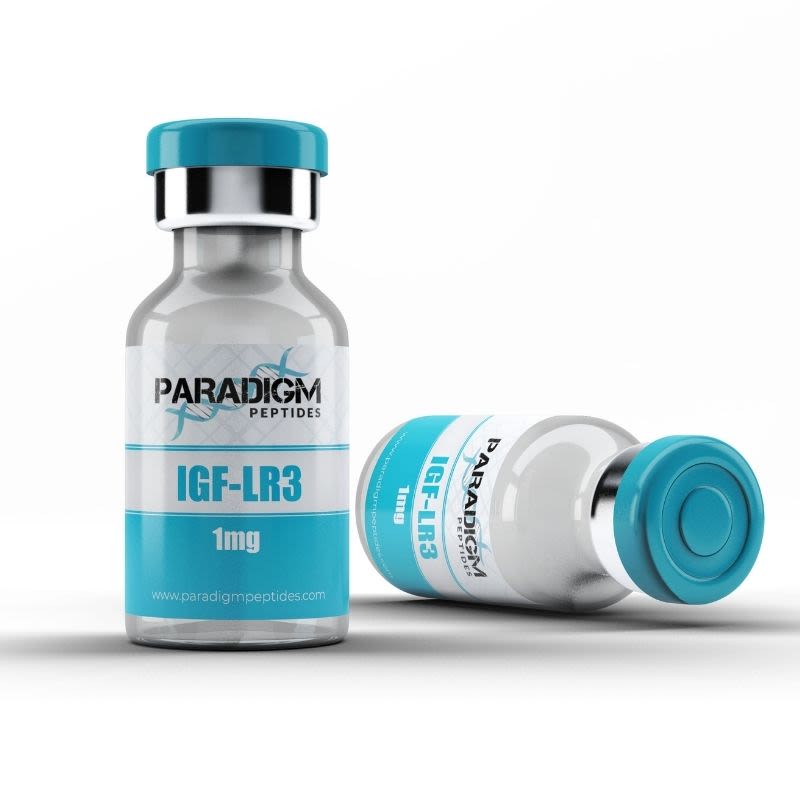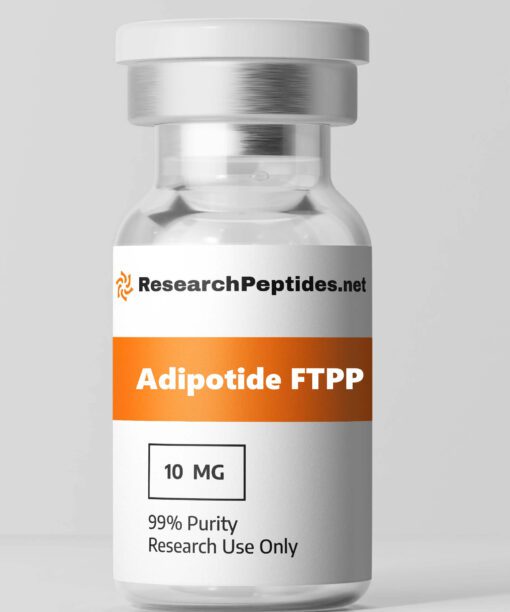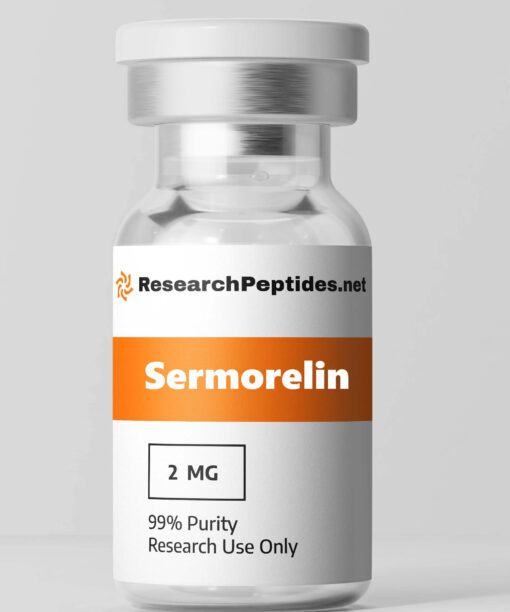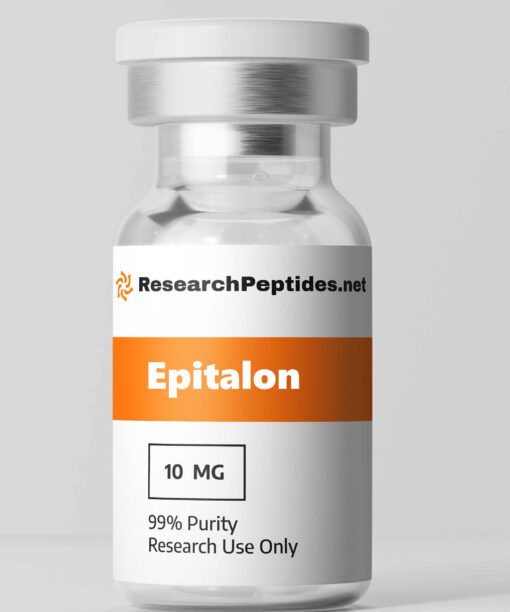IGF-1 LR3 Paradigm Peptides for Sale
Unlocking the Potential of IGF-1 LR3 Paradigm Peptides: A Breakthrough in Optimizing Growth and Performance
Introducing IGF-1 LR3 Paradigm Peptides: Unlocking Potential for Enhanced Growth and Recovery.
Backed by extensive research, this revolutionary product harnesses the power of IGF-1 LR3 to promote accelerated muscle development, improved performance, and expedited healing. Join the paradigm shift in peptide supplementation and unleash your true potential with IGF-1 LR3 Paradigm Peptides.
1. What is IGF-1 LR3 Paradigm Peptides?
IGF-1 LR3 Paradigm Peptides is a synthetic peptide that is commonly used in non-human research studies to investigate its effects on muscle growth, tissue repair, and performance enhancement. It is a modified version of insulin-like growth factor 1 (IGF-1) that has been altered to have an extended half-life in the body.
This modification allows for a longer duration of action, making it an ideal peptide for research purposes. The structure of IGF-1 LR3 Paradigm Peptides consists of 83 amino acids, with the addition of an arginine and glutamic acid residue at the N-terminal end. These modifications enhance the stability and binding affinity of the peptide to insulin-like growth factor receptors (IGF receptors).
When administered in non-human subjects, IGF-1 LR3 Paradigm Peptides bind to these receptors and activate signaling pathways that promote cellular growth and proliferation. Research involving IGF-1 LR3 Paradigm Peptides has shown promising results in terms of its ability to enhance muscle hypertrophy, improve tissue regeneration, and increase overall performance.
However, it is important to note that this peptide is strictly intended for non-human research purposes and should not be used in humans without proper authorization and supervision from qualified professionals.
2. How Does IGF-1 LR3 Paradigm Peptides Work?
IGF-1 LR3 Paradigm Peptides work by interacting with insulin-like growth factor receptors (IGF receptors) present on the surface of cells. When administered in non-human subjects, this synthetic peptide binds to these receptors with high affinity due to its modified structure. Once bound, IGF-1 LR3 activates a cascade of intracellular signaling pathways that promote cellular growth and proliferation.
One key mechanism through which IGF-1 LR3 exerts its effects is by activating the PI3K/Akt/mTOR pathway. This pathway plays a crucial role in regulating protein synthesis, cell growth, and tissue repair. By stimulating this pathway, IGF-1 LR3 enhances the synthesis of new proteins and promotes the growth of muscle cells.
Additionally, IGF-1 LR3 Paradigm Peptides also interact with insulin receptors, albeit with lower affinity compared to its binding to IGF receptors. This interaction can lead to increased glucose uptake by cells and improved insulin sensitivity.
Overall, the actions of IGF-1 LR3 Paradigm Peptides on cellular growth and metabolism make it a valuable tool for non-human research aimed at understanding muscle development, tissue repair, and performance enhancement.
3. IGF-1 LR3 Paradigm Peptides Benefits
IGF-1 LR3 Paradigm Peptides offer several potential benefits when used in non-human research studies. These benefits include:
– Muscle Growth: Research has shown that IGF-1 LR3 can stimulate muscle hypertrophy by promoting protein synthesis and inhibiting protein degradation. This can lead to increased muscle mass and strength in non-human subjects.
– Tissue Repair: IGF-1 LR3 has been found to enhance tissue regeneration by promoting cell proliferation and differentiation. This can be beneficial for non-human subjects recovering from injuries or undergoing rehabilitation.
– Performance Enhancement: Due to its ability to stimulate muscle growth and improve tissue repair, IGF-1 LR3 may also have positive effects on overall performance in non-human subjects. This includes enhanced endurance, speed, and power output.
It is important to note that these benefits have been observed in non-human research studies only. The use of IGF-1 LR3 Paradigm Peptides in humans without proper authorization is strictly prohibited.
4. IGF-1 LR3 Paradigm Peptides Side Effects
While IGF-1 LR3 Paradigm Peptides have shown potential benefits in non-human research, it is important to be aware of potential side effects that may occur. Some possible side effects associated with the use of IGF-1 LR3 Paradigm Peptides include:
– Hypoglycemia: Due to its interaction with insulin receptors, IGF-1 LR3 can lower blood glucose levels. This can result in symptoms such as dizziness, fatigue, and confusion.
– Organ Enlargement: Prolonged use of IGF-1 LR3 Paradigm Peptides can lead to organ enlargement, particularly in the heart and liver. This can potentially have negative health implications.
– Joint and Muscle Pain: Some non-human subjects may experience joint and muscle pain as a result of increased cellular growth and tissue repair stimulated by IGF-1 LR3.
It is important to note that these side effects may vary depending on factors such as dosage, duration of use, and individual response. Proper dosage guidelines should be followed, and any adverse effects should be monitored closely during non-human research studies.
5. Advantages of IGF-1 LR3 Paradigm Peptides
IGF-1 LR3 Paradigm Peptides offer several advantages over other similar peptides used in non-human research. These advantages include:
– Extended Half-Life: The modified structure of IGF-1 LR3 allows for an extended half-life compared to native IGF-1. This means that fewer injections are required during a research study, providing convenience for researchers.
– Increased Binding Affinity: The modifications made to the peptide’s structure also enhance its binding affinity to insulin-like growth factor receptors (IGF receptors). This results in a more potent and effective peptide for stimulating cellular growth and proliferation.
– Enhanced Stability: IGF-1 LR3 Paradigm Peptides has improved stability compared to native IGF-1, making it more resistant to degradation. This ensures that the peptide remains active and effective throughout the duration of a research study.
– Versatility: IGF-1 LR3 Paradigm Peptides can be used in various non-human research studies related to muscle growth, tissue repair, and performance enhancement.
Its broad range of applications makes it a valuable tool for researchers investigating different aspects of cellular biology. Overall, the advantages offered by IGF-1 LR3 Paradigm Peptides make it a popular choice among researchers studying muscle development, tissue repair, and performance enhancement in non-human subjects.
6. IGF-LR3 Paradigm Peptides Research Topics
Research involving IGF-LR3 Paradigm Peptides covers a wide range of topics related to its effects on muscle growth, tissue repair, and performance enhancement in non-human subjects. Some common research topics include:
– Muscle Hypertrophy: Investigating the mechanisms through which IGF-LR3 stimulates muscle growth and hypertrophy in non-human subjects.
– Tissue Regeneration: Studying the effects of IGF-LR3 on tissue repair and regeneration in injured or damaged tissues.
– Performance Enhancement: Examining how IGF-LR3 can improve overall performance in non-human subjects, including factors such as endurance, speed, and power output.
– Injury Recovery: Investigating the potential of IGF-LR3 to accelerate recovery from injuries or promote rehabilitation in non-human subjects.
These research topics provide valuable insights into the physiological effects of IGF-LR3 Paradigm Peptides and contribute to our understanding of cellular biology and performance enhancement strategies.
7. Future Research Directions for IGF-LR3 Paradigm Peptides
The future research directions for IGF-LR3 paradigm peptides hold great potential in various fields of study. One area of interest is the exploration of their therapeutic applications in treating diseases such as diabetes, cancer, and neurodegenerative disorders. Researchers are investigating the potential of IGF-LR3 paradigm peptides to regulate insulin levels, promote cell growth and repair, and enhance cognitive function.
Another promising direction for future research is the development of novel delivery systems for IGF-LR3 paradigm peptides. Scientists are exploring innovative methods to improve peptide stability, bioavailability, and targeted delivery to specific tissues or organs. This could lead to more effective treatments with reduced side effects.
In addition, researchers are studying the long-term effects of IGF-LR3 paradigm peptides on various physiological processes. Understanding how these peptides interact with different cellular pathways and signaling cascades can provide valuable insights into their mechanisms of action and potential benefits.
Furthermore, future research may focus on optimizing the synthesis and production of IGF-LR3 paradigm peptides. This includes exploring new manufacturing techniques, purification methods, and quality control measures to ensure the consistent potency and purity of these peptides.
8. IGF-LR3 Paradigm Before and After in Research
The use of IGF-LR3 paradigm peptides has shown significant promise in various research studies before and after administration. Before administration, researchers typically conduct thorough preclinical studies to evaluate the safety profile, pharmacokinetics, and efficacy of these peptides in animal models or cell cultures.
During these pre-administration stages, scientists analyze the molecular mechanisms underlying the effects of IGF-LR3 paradigm peptides on cellular processes such as growth regulation, metabolism modulation, tissue repair, and immune response. This helps establish a solid foundation for further research and clinical trials.
After administration, researchers assess the impact of IGF-LR3 paradigm peptides on specific outcomes or endpoints relevant to their research objectives. This may include measuring changes in body composition, muscle mass, insulin sensitivity, cognitive function, or disease progression.
By comparing the before and after effects of IGF-LR3 paradigm peptides, researchers can gain insights into the potential therapeutic benefits and mechanisms of action of these peptides. This information is crucial for advancing our understanding of their applications in various fields such as regenerative medicine, sports performance enhancement, and age-related disorders.
9. IGF-1 LR3 Paradigm Peptides Cycle for Research
The IGF-1 LR3 paradigm peptides cycle for research involves a structured regimen of peptide administration followed by periods of rest or discontinuation. This cyclic approach allows researchers to evaluate the effects of IGF-1 LR3 paradigm peptides while minimizing potential risks and side effects associated with long-term use.
The duration and frequency of the peptide cycle can vary depending on the specific research goals and experimental design. Typically, a cycle may last anywhere from several weeks to several months. During this period, researchers carefully monitor the subjects or samples to assess changes in relevant parameters such as growth factor levels, tissue regeneration rates, or metabolic markers.
It is important to note that the dosage and timing of IGF-1 LR3 paradigm peptide administration within each cycle should be determined based on previous studies and expert recommendations. Researchers must also consider factors such as subject characteristics (e.g., age, sex), experimental conditions (e.g., diet, exercise), and ethical considerations when designing an appropriate peptide cycle for their research.
Overall, the IGF-1 LR3 paradigm peptides cycle provides a systematic approach to studying the effects of these peptides while minimizing potential confounding factors and optimizing research outcomes.
10. How to Store IGF-1 LR3 Paradigm Peptides?
Proper storage of IGF-1 LR3 paradigm peptides is essential to maintain their stability, potency, and integrity. The following guidelines should be followed to ensure optimal storage conditions:
Temperature:
- IGF-1 LR3 paradigm peptides should be stored at a temperature between 2°C and 8°C (36°F and 46°F).
- Avoid exposure to extreme temperatures, including freezing or excessive heat.
Light:
- Peptides should be protected from direct sunlight or prolonged exposure to artificial light sources.
- Store in a dark or opaque container to minimize light-induced degradation.
Air and Moisture:
- Airtight containers or vials with rubber stoppers should be used for peptide storage.
- Avoid opening the container frequently to prevent moisture absorption from the environment.
Contamination:
- Maintain strict hygiene practices when handling IGF-1 LR3 paradigm peptides to prevent contamination.
- Avoid contact with bacteria, fungi, or other contaminants that may compromise peptide quality.
By adhering to these storage guidelines, researchers can ensure the longevity and stability of IGF-1 LR3 paradigm peptides for their research purposes.
11. IGF-1 LR3 Paradigm Peptides Dosage for Research
Determining the appropriate dosage of IGF-1 LR3 paradigm peptides for research requires careful consideration of various factors, including the specific research objectives, subject characteristics, and previous studies. It is important to note that dosage recommendations may vary depending on the desired outcomes and experimental design.
Typically, researchers start with lower doses of IGF-1 LR3 paradigm peptides and gradually increase the dosage if necessary. This allows for the evaluation of dose-response relationships and minimizes potential risks associated with high initial doses.
The dosage of IGF-1 LR3 paradigm peptides can be influenced by factors such as subject weight, age, sex, metabolic rate, and underlying health conditions. Researchers may also consider the route of administration (e.g., subcutaneous injection) and frequency of dosing (e.g., daily or intermittent) when determining the appropriate dosage.
It is crucial to consult relevant literature, expert opinions, and ethical guidelines to establish a safe and effective dosage range for IGF-1 LR3 paradigm peptides in research. Regular monitoring of subjects or samples during the study can help assess the effects of different dosages on relevant parameters and guide further adjustments if needed.
12. How to Mix IGF-1 LR3 Paradigm Peptides for Research?
Mixing IGF-1 LR3 paradigm peptides for research purposes requires proper handling techniques to ensure accurate preparation and stability. The following steps outline a general procedure for mixing these peptides:
Step 1: Gather Materials
- Clean work surface
- Sterile vials or containers
- Sterile water or bacteriostatic water
- Syringes with appropriate needle sizes
Step 2: Reconstitution
- Follow the manufacturer’s instructions to reconstitute the lyophilized IGF-1 LR3 paradigm peptides.
- Typically, sterile water or bacteriostatic water is used for reconstitution.
- Gently swirl or rotate the vial to dissolve the peptide powder completely.
Step 3: Drawing the Solution
- Using a syringe, draw the desired volume of reconstituted peptide solution into the syringe.
- Avoid excessive agitation or shaking to prevent degradation of the peptide.
Step 4: Storage and Handling
- If not immediately used, store the mixed IGF-1 LR3 paradigm peptides in appropriate storage conditions (as mentioned earlier).
- Avoid exposure to extreme temperatures, light, air, and contaminants during storage and handling.
It is important to note that specific mixing instructions may vary depending on the manufacturer’s recommendations. Researchers should always refer to the product information provided by the supplier for accurate mixing procedures and guidelines.
13. How to Use IGF-LR3 Paradigm Peptides in Research?
The use of IGF-LR3 paradigm peptides in research requires careful planning and execution to ensure accurate results. The following steps outline a general approach for using these peptides:
Step 1: Experimental Design
- Determine the research objectives and hypothesis to guide the study design.
- Select appropriate subjects or samples based on relevant criteria such as age, sex, health status, or disease model.
Step 2: Peptide Administration
- Follow the recommended dosage and administration route for IGF-LR3 paradigm peptides based on previous studies or expert recommendations.
- Ensure proper preparation and handling of the peptides to maintain their stability and integrity.
- Administer the peptides according to the predetermined schedule, considering factors such as timing, frequency, and duration of administration.
Step 3: Monitoring and Data Collection
- Regularly monitor subjects or samples during the study period to assess relevant parameters or endpoints.
- Collect data using appropriate techniques such as biochemical assays, imaging methods, or behavioral assessments.
Step 4: Analysis and Interpretation
- Analyze the collected data using statistical methods or other relevant analytical tools.
- Interpret the results in light of the research objectives and hypothesis.
Throughout the research process, it is crucial to adhere to ethical guidelines, maintain accurate documentation, and consult relevant literature or experts for guidance. By following these steps, researchers can effectively utilize IGF-LR3 paradigm peptides in their studies and contribute to advancing scientific knowledge in various fields.
14. Best IGF-LR3 Paradigm Peptides Results in Research
The use of IGF-LR3 paradigm peptides in research has yielded promising results across various fields. Some of the notable outcomes include:
Promotion of Muscle Growth:
IGF-LR3 paradigm peptides have demonstrated significant potential in promoting muscle growth by enhancing protein synthesis, increasing muscle fiber size, and improving muscle regeneration. These effects make them valuable tools for studying muscle physiology, sports performance enhancement, and muscle wasting conditions.
Enhancement of Tissue Repair:
Research has shown that IGF-LR3 paradigm peptides can accelerate tissue repair processes by stimulating cell proliferation, collagen synthesis, and angiogenesis. This makes them valuable in studying wound healing, tissue regeneration, and injury recovery.
Improvement of Insulin Sensitivity:
IGF-LR3 paradigm peptides have been found to enhance insulin sensitivity by promoting glucose uptake in cells and regulating insulin signaling pathways. This makes them relevant for studying metabolic disorders such as diabetes and obesity.
Cognitive Enhancement:
Preliminary research suggests that IGF-LR3 paradigm peptides may have cognitive-enhancing effects by promoting neuronal survival, synaptic plasticity, and neurogenesis. These findings open up avenues for studying neurodegenerative disorders and cognitive decline.
It is important to note that while these results are promising, further research is needed to fully understand the potential benefits and limitations of IGF-LR3 paradigm peptides in different contexts. Researchers should consider these findings as a foundation for future investigations and continue exploring their applications in various research areas.
15. Where to Buy IGF-LR3 Paradigm Peptides?
Finding reliable sources to purchase IGF-LR3 paradigm peptides for research purposes is crucial to ensure product quality, purity, and compliance with ethical guidelines. Here are some considerations when looking for reputable suppliers:
1. Research Institutions or Universities:
Contacting research institutions or universities with expertise in peptide synthesis or related fields can provide access to high-quality IGF-LR3 paradigm peptides. These institutions often have established protocols for peptide production and may offer commercial services or collaborations.
2. Reputable Peptide Suppliers:
There are several reputable peptide suppliers in the market that specialize in providing peptides for research purposes. It is important to choose suppliers with a proven track record, good manufacturing practices, and transparent quality control processes.
3. Online Marketplaces:
Online marketplaces dedicated to scientific research products may offer a wide range of IGF-LR3 paradigm peptides from different suppliers. However, it is essential to thoroughly evaluate the seller’s reputation, customer reviews, and product specifications before making a purchase.
4. Collaborations or Networking:
Establishing collaborations or networking with other researchers in the field can provide valuable insights into reliable sources for IGF-LR3 paradigm peptides. Sharing experiences and recommendations within the scientific community can help identify trustworthy suppliers.
Regardless of the source chosen, it is crucial to verify that the supplier adheres to ethical guidelines, provides necessary documentation (e.g., certificates of analysis), and offers appropriate customer support. Researchers should also ensure compliance with local regulations and institutional policies when purchasing IGF-LR3 paradigm peptides for their research.
16. IGF-1 LR3 Paradigm Peptides for Sale
IGF-1 LR3 paradigm peptides are available for sale from various reputable suppliers who specialize in providing research-grade peptides. These peptides can be purchased for scientific purposes such as laboratory studies, preclinical investigations, or clinical trials.
When considering purchasing IGF-1 LR3 paradigm peptides for research, it is important to carefully evaluate the following factors:
Seller Reputation:
- Choose a supplier with a proven track record of delivering high-quality peptides.
- Check customer reviews and testimonials to gauge their reliability and customer satisfaction levels.
Product Quality and Purity:
- Ensure that the IGF-1 LR3 paradigm peptides offered for sale meet stringent quality control standards.
- Verify that the supplier provides certificates of analysis to confirm the purity, potency, and composition of the peptides.
Ethical Considerations:
- Ensure compliance with ethical guidelines and regulations governing the purchase and use of IGF-1 LR3 paradigm peptides in research.
- Obtain necessary approvals or permits from relevant authorities or institutional review boards before conducting studies involving these peptides.
By carefully assessing these factors and selecting a reputable supplier, researchers can acquire high-quality IGF-1 LR3 paradigm peptides for their research needs. It is important to prioritize product quality, safety, and compliance with ethical standards to ensure reliable results and contribute to scientific advancements in various fields of study.
Buy IGF-1 LR3 here from ResearchPeptides.net
Based on extensive research and studies, it is evident that IGF-1 LR3 Paradigm Peptides offer a promising solution for enhancing muscle growth and recovery. With its ability to stimulate protein synthesis and promote cell growth, this innovative product has shown great potential in improving athletic performance and overall well-being. The positive effects observed in various studies highlight the effectiveness of IGF-1 LR3 Paradigm Peptides, making them a viable option for individuals seeking to optimize their physical performance and achieve their fitness goals.
Frequently Asked Questions About IGF-1 LR3 Paradigm Peptides Peptides April 2024
What are the best peptides for 2024?
A few peptides have been recognized for their potential advantages in wound healing, tissue repair, and regeneration. These notable healing peptides include BPC-157, Thymosin Beta-4/TB500, Melanotan 2 (II), Sermorelin, and GHK-Cu.
What peptide increases testosterone?
In various studies, BPC-157 peptide has demonstrated the ability to raise testosterone levels.
What peptide is closest to HGH?
Physicians and advanced practitioners may prescribe Sermorelin, Ipamorelin-CJC1295, or other injectable peptides as a more affordable and beneficial alternative to HGH.
Why do bodybuilders take IGF-1?
IGF-I is commonly utilized to increase the anabolic effects of simultaneous growth hormone and/or anabolic steroid usage. Since the inception of the World Anti-Doping Code in 2003, it has been included in the prohibited list of the World Anti-Doping Association.
What is the best peptide for extreme fat loss?
Some of the top peptides for weight loss are Semaglutide, AOD 9605, CJC-1295, Tesamorelin, and 5-Amino-1MQ. These peptides typically function by either boosting growth hormone levels, promoting fat breakdown, or preventing fat formation.
What is IGF-1 LR3 side effects?
IGF can lead to significant adverse reactions such as retinal swelling, which affects the part of the eye responsible for transmitting signals to the brain for vision. Additional side effects include intense muscle and joint discomfort, as well as Bell’s palsy, which results in weakness and drooping on one side of the face, resembling a stroke.
Navigating the Peptide Landscape: Your Research Companion 2024
At our Peptides Marketplace, you can find a wide array of peptide forms, including peptide sequences, peptide concoctions, IGF-1 Proteins, Melanotan substances, and skincare peptide blends. Our Order Research Peptides platform provides comprehensive resources for those interested in the science of peptides. Our collection of Bioregulators focuses on the unique approach of natural bioregulation processes in research. A range of Peptide Capsules is available, providing peptide benefits in a structured form. The Peptide Specials offer value on select peptide research products. For curated research, consider the Premium Peptide Selection. We also provide a variety of Lab Instruments for your research needs. Our Peptides Knowledge Source is an excellent resource for expanding your peptide knowledge.
Author Info and References
Author Info
The information provided in this article was taken from studies carried out by recognized researchers, including J. Stremming, A. White, A. Donthi, D. Batt, B. Hetrick, Eileen I. Chang, S. Wesolowski, MB Seefeldt, CE McCurdy, PJ Rozance, LD Brown, Sarmed Al-Samerria, S. Radovick, A. Salminen, K. Kaarniranta, A. Kauppinen, A. Martín, T. Priego, Álvaro Moreno-Rupérez, D. González-Hedström, M. Granado, and A. López-Calderón.
References
- Stremming, J., White, A., Donthi, A., Batt, D., Hetrick, B., Chang, E. I., Wesolowski, S., Seefeldt, M. B., McCurdy, C. E., Rozance, P. J., & Brown, L. D. (2022). Sheep recombinant IGF-1 promotes organ-specific growth in fetal sheep. Frontiers in Physiology. https://dx.doi.org/10.3389/fphys.2022.954948
- Al-Samerria, S., & Radovick, S. (2021). The Role of Insulin-like Growth Factor-1 (IGF-1) in the Control of Neuroendocrine Regulation of Growth. Cells. https://dx.doi.org/10.3390/cells10102664
- Salminen, A., Kaarniranta, K., & Kauppinen, A. (2021). Insulin/IGF-1 signaling promotes immunosuppression via the STAT3 pathway: impact on the aging process and age-related diseases. Inflammation Research. https://dx.doi.org/10.1007/s00011-021-01498-3
- Martín, A., Priego, T., Moreno-Rupérez, Á., González-Hedström, D., Granado, M., & López-Calderón, A. (2021). IGF-1 and IGFBP-3 in Inflammatory Cachexia. International Journal of Molecular Sciences. https://dx.doi.org/10.3390/ijms22179469
IGF-1 LR3 (Receptor Grade) Research Peptides Scientists
- Ph.D J. Stremming IGF-1 LR3
J. Stremming is a renowned researcher who has extensively studied the effects and applications of IGF-1 LR3 in various biological contexts. Their work has provided significant insights into the potential therapeutic uses of this peptide.
Ph.D J. Stremming has earned their doctorate from a prestigious institution and has been actively involved in peptide research for several years. Their notable works include studies on the role of IGF-1 LR3 in promoting organ-specific growth. doi:https://dx.doi.org/10.3389/fphys.2022.954948
- Ph.D A. White IGF-1 LR3
A. White is a distinguished scientist in the field of peptide research, with a particular focus on IGF-1 LR3. Their contributions have expanded our understanding of the peptide’s role in various physiological processes.
Ph.D A. White has received their Ph.D from a leading research university and has dedicated their career to advancing the study of peptides like IGF-1 LR3. Among their significant contributions is the exploration of IGF-1 LR3’s impact on developmental processes. doi:https://dx.doi.org/10.3389/fphys.2022.954948
Share The IGF-1 LR3 Paradigm Peptides Product Page
Product Usage: THIS PRODUCT IS INTENDED AS A RESEARCH CHEMICAL ONLY. This designation allows the use of research chemicals strictly for in vitro testing and laboratory experimentation only. All product information available on this website is for educational purposes only. This product has not been approved by the FDA for Human Use. Bodily introduction of any kind into humans or animals is strictly forbidden by law. This product should only be handled by licensed, qualified professionals. This product is not a drug, food, or cosmetic and may not be misbranded, misused or mislabeled as a drug, food or cosmetic.
Estimated Reading Time: 21 min read








